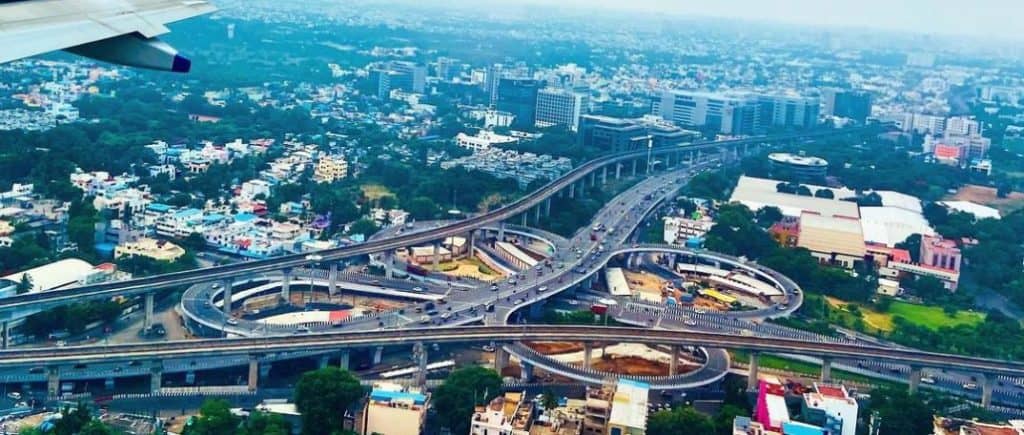Finance Minister Nirmala Sitharaman’s Budget 2022-23 provides no relief to the people, especially those living in urban centres who were severely hit by the pandemic. With an estimated 200 million plus people without work, most of them in the cities, there was a dire need for addressing this problem. However, the urgent need for some sort of urban employment scheme remained unaddressed.
The only positive aspect of the budget speech is that the finance minister has finally accepted what we, through various forums, have been advocating for long — that the current model of urban development is not sustainable. That a new paradigm is required for the urban sector.
The minister announced that a team of experts will be constituted to examine this. Also, urban development with a new paradigm will be taught in some five centres of excellence in the country. Budgetary outlay has also been marked for this.
So far, so good. But going by the BJP government’s understanding of urbanisation, through some of the documents and proposals laid out by NITI Aayog and the ministry of housing and urban development, it is important that we remain cautious about the proposed plans.
Read more: Sustainable Development: Strategies for the long road ahead in Indian cities
Urban planning is already being taught in various colleges and universities. But this new paradigm shift, it seems, emanates from (a) the National Urban Policy Framework (NUPF), a document prepared by this government a few years ago and (b) NITI Aayog.
The NUPF bases its list of priorities, actions and outcome on 10 sutras, or philosophical principles, of governance in cities. NITI Aayog, on the other hand, is advocating massive changes in land use planning — a sample of which we are witnessing in Andaman & Nicobar Islands redevelopment and in Lakshadweep.
As it is, in over 5,000 towns and cities across India where unemployment is soaring and the informal sector and its workers are finding it difficult to even maintain their livelihoods, costs of urban utilities like water, electricity and other services are rising, the health sector is focussing more on curative care, homelessness has increased to over 10 million, mobility is costing more and pollution has become a major hazard.
It was expected that the budget would address these issues with adequate financial support. But it would seem the budget is opening the door for large corporations to take over urban planning and development.

Neglect of affordable housing
Let us take a few examples to substantiate our point.
The much tom-tommed increase in budgetary allocation for urban development from Rs 73,850 crore to Rs 76,549 crore is actually a fall in its real GDP ratio. It is 0.5% of GDP in the current year, whereas for 2022-23, it will be 0.47%. If one takes into account an inflation rate of over 5%, the actual allocation on urban development is far less than the current year and much less than what is required.
The finance minister rightly pointed out that 50% of India would be urban by 2047. But with the current design, we will have more people living in urban slums rather than in decent houses. So, what was expected from the budget was that there will be more support for formal housing. Already formal housing has fallen from near 6% to 3% in the last decade.
The PMAY (Pradhan Mantri Awas Yojana) has gotten an outlay of Rs 48,000 crore which is roughly the same as last year. But again, if inflation is taken into account, the actual allocation is lesser than in 2021-22.
More important, however, is the sluggish pace of housing construction. Of the total sanctioned 1.14 crore housing units for urban areas only 53.42 lakh houses, roughly 47.6%, have been completed so far.
Read more: Opinion: Five areas Swachh Bharat 2.0 must focus on to overcome our real waste challenges
Another addition to housing was the ARHC scheme — Affordable Rental Housing Complex. This is important in the context of the informal sector. But the government is pushing for more private sector intervention in this. The government decided to hand over the already constructed houses under various schemes like the JNNURM, BSUP etc., on a rental basis. But out of a total of 86,065 houses built, merely 1,934 have been allotted, 1707 of these being in Chandigarh alone. Now a promise for 80 lakh houses in the new budget is another target with no mention of following up on the ground.
The informal sector in cities needs housing for the large numbers of its workers. Not a word has been mentioned in the budget on slums which comprise nearly 40% of the population of some of the larger urban agglomerates. Simply providing land tenure rights and proper facilities would have done much to improve their lives.
Urban mobility, another casualty
Urban mobility is another area where the budget has laid emphasis. Urban mobility is linked to the working people’s ability to commute; it is linked to their savings; their health; climate change action plans in cities, not to forget rising pollution levels.
What was desired was a strong stimulus for enhanced public mobility by linking grants to creating urban mobility infrastructure based on bus rapid transport, pedestrianisation and cycling tracks. However, wedded to the large capital intensive technological paradigm of urban mobility, the budget once again reiterates its emphasis on metros which is not one of the core desired forms of mobility, especially for the working population.
The only addition is of providing 20,000 buses which is like providing four buses to each of the 5,000 urban townships. It is ridiculous. Besides, even these buses will be run on a PPP basis. The intent is for more private entry into the public transport sector in cities.
Public health, low priority
It was hoped that the government will increase capital expenditure and will assist the cities to improve the public health infrastructure. Urban public and community health centres are lacking in basic infrastructure like X-ray machines and laboratories.
Budget 2022-23 announced support for over 11,024 urban health centres but the actual outlay is less than last year. Under the centrally sponsored schemes under health, the budget proposes to reduce the budgetary allocation from Rs 50,591.14 to Rs 47,634.07 crore. An indication of the low priority of the government for the health sector.
With the launching of SBM 2.0, it was felt that the failures of the previous SBM would be rectified and more stress would be laid to help cities in handling their solid and liquid waste. But the emphasis, instead of decentralised waste management, is for more capital intensive technology-driven waste management and a good amount of subsidy was given for such units mostly run by private companies.
Read more: What the Jal Jeevan Mission must focus on to fix urban water supply
The budgetary allocation for SBM remains the same as the current year at Rs 2300 crore. A Supreme Court comment on Delhi waste said that one of the waste dumping sites would soon cross the height of the Qutub Minar. These are the new aesthetics that neoliberal urbanisation is providing to city dwellers.
Jal Jeevan Mission
Water to every household is another flagship scheme of the union government. However, the model of implementation of the Jal Jeevan Mission is interesting.

The mission intends to cover nearly 2.7 crore households in urban India who do not have water connections, in a period of five years. The urban scheme was showcased in February 2021 with a total outlay of Rs 2,87,000 crore. The target is to reduce the non-revenue water (NRW) to 20% and the tool for achieving it is to replicate the Telangana model of PPP.
There is no problem in reducing NRW. In fact, that should be done by plugging leakages and overhauling the infrastructure. But little money has been granted for that. The other way is by levying a user fee which shall be equivalent to the cost of production of water.
With a PPP model, the interests of the large tech giants are secured and the cost burden is on the people. Even the budgetary allocation of Rs 60,000 crore for JJM, both urban and rural, is made under revenue expenditure and not a single penny on capital expenditure.
Totally ignoring climate change
There is not a single word on climate change in the budget speech. Many Indian cities are facing serious impact of climate change. Floods, heat island effects, people dying because of heatwaves are now common features in urban India.
Forget about mitigation strategies, even the desired goals of mapping vulnerability in cities is not a priority of this government. Most towns do not even have a climate atlas or a vulnerability study to assess the challenges that the cities face.
Some allocation from the union budget was needed to take on this task. However, the budget is silent on it. Our union budget is not prepared to spend even a penny on such studies.
The government’s priorities can be clearly seen through the prism of this budget which is for continuing the previous models of urbanisation i.e., instead of providing relief to the people, allowing cities to become centres of massive accumulation of capital through the appropriation of basic urban services.
government must provide roti/kapada/dava/makan
to all needy citizens.
government must provide medicines especially herbal home remedies for middle-class economically poor teach yoga drugless therapies.